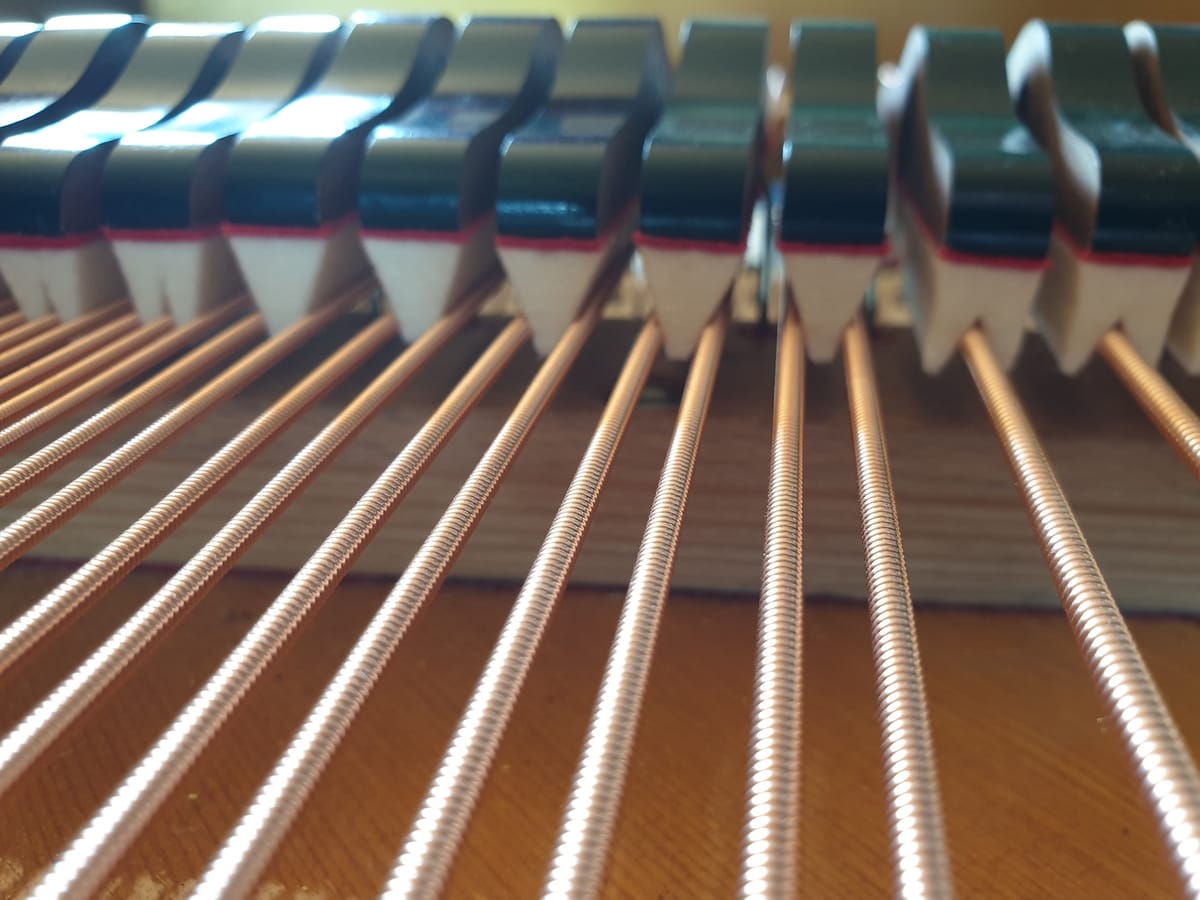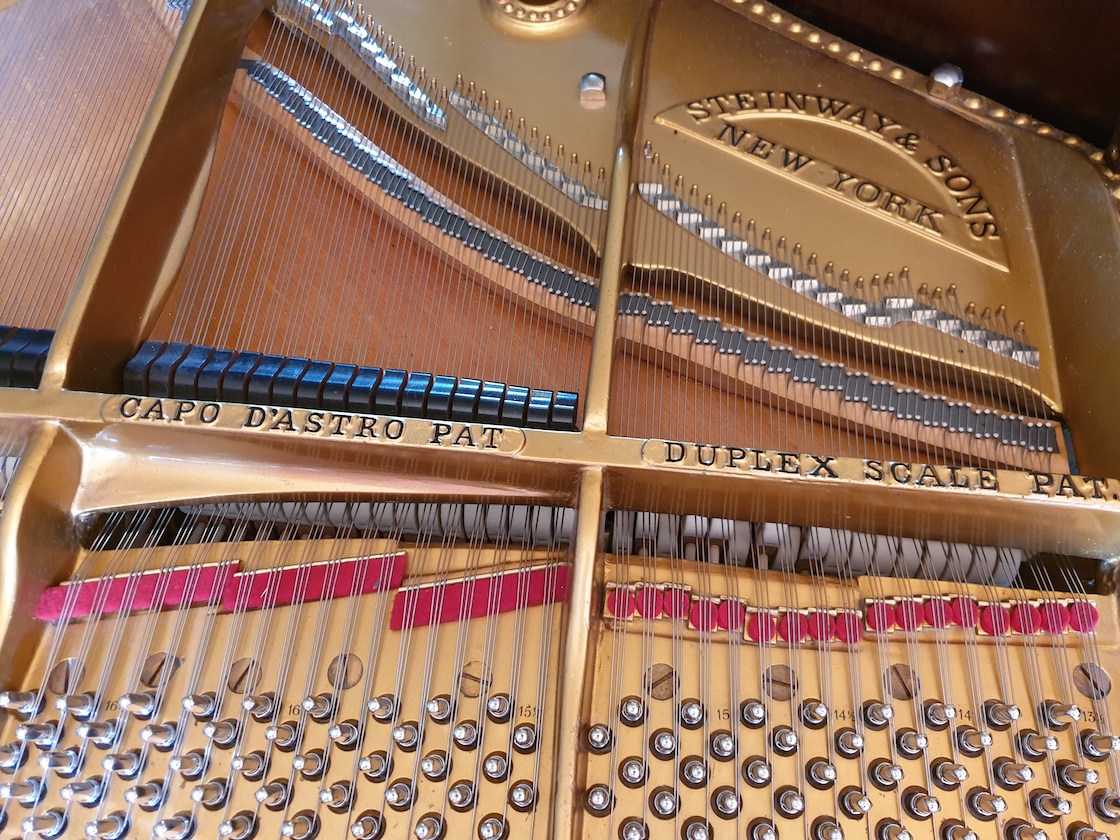The Pedal – Part II

In the previous article we considered the tone enhancing function of the pedal and this time we will explore how to use the pedal for best results. It is essential, for correct use of the pedal, to have good use of the whole body. Although some professional pianists can adopt an idiosyncratic posture, it is best to aim for sitting tall on a height-adjustable stool that allows the forearms to be parallel with the floor when playing, with the feet flat on the floor. The stool needs to be far enough away from the piano for the pianist to sit on the front half of it rather than sitting right to the back. This allows the upper leg freedom of movement and keeps the heel of the pedalling foot firmly on the floor while the ball of the foot is on the pedal. Lifting the heel off the floor will unbalance the whole body and can create unwanted noise as it comes back down. The foot needs to stay in contact with the pedal and should be moved smoothly to ensure that the pedal mechanism operates silently.
The most useful pedalling techniques for pianists to begin with are legato pedalling, direct pedalling and finger-pedalling.
Legato Pedalling
Legato piano playing, as opposed to staccato, is achieved by the fingers releasing a key a split second after the next one is played, so that the sound appears be continuous. Legato pedalling can help to make notes or chords appear to be legato if the notes are too far apart for the fingers to connect them. However, even when the fingers can physically make the notes smooth, legato pedalling is used for the purpose of colouring the tone. The technique involves a continuously synchronised movement of putting the pedal down slightly after the keys have been depressed, then lifting the pedal at the same time as the next chord or note, then putting the pedal down again slightly after, and so on. It is really better to learn the skill by being taught rather than by reading about it!
When several consecutive sounds relate to the same chord, the pedal might remain down but it needs to be ‘changed’ as soon as the harmony moves to a different chord, otherwise the sounds could be inappropriately blurred together, giving unwanted dissonance. Because we do not necessarily want harmonic progressions to blur into each other, acute listening skills are needed to judge how the pedal may be used, hence the suggestion that we ‘pedal with our ears’! In this performance of Grieg’s Arietta, the pedal sometimes blurs the harmonies despite otherwise musical playing.
Direct Pedalling
Direct pedalling is technically easier to learn than legato pedalling, but not as widely useful. It involves putting the pedal down at the same time as the fingers depress the keys and releasing it as the keys are lifted, before playing the next note(s). The objective is to enhance the sound without producing legato, for instance in a series of detached chords as shown in the video.
The first two videos demonstrate the difference between legato pedalling and direct pedalling. The third shows finger pedalling, a technique that is created by the fingers rather than the pedal, with an effect similar to subtle legato pedalling.
Finger Pedalling
Finger pedalling may be used in preference to legato pedalling where the style requires particular clarity as well as resonance, for instance with a Classical era Alberti bass accompaniment, as demonstrated in the video. There is a deliberate delay in releasing the keys; in particular the first and lowest note of a left hand group is held down and continues sounding until the next chord change. Holding a key down keeps the damper off its strings, allowing them to continue vibrating so that the note sounds for longer.
Learning to pedal
During the course of learning, it is interesting to explore the way in which the sound quality is slightly different if the pedal is put down before the keys, simultaneously with the keys, or slightly after the keys. The highest strings of the piano, incidentally, do not have dampers but playing these with no pedal is still different from playing them with pedal down and the other dampers lifted. Learning to pedal well is not a simple task but a musical journey, since the more sensitive the pianist’s listening skills and the more sophisticated and complex the music, the wider range of pedalling techniques are required.






